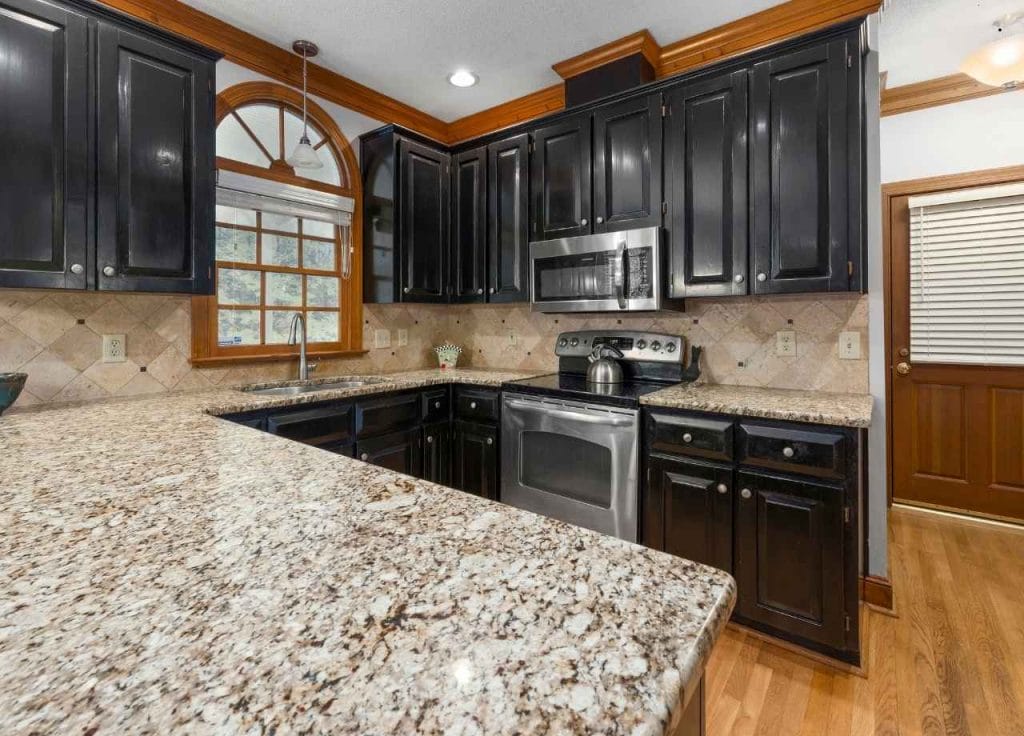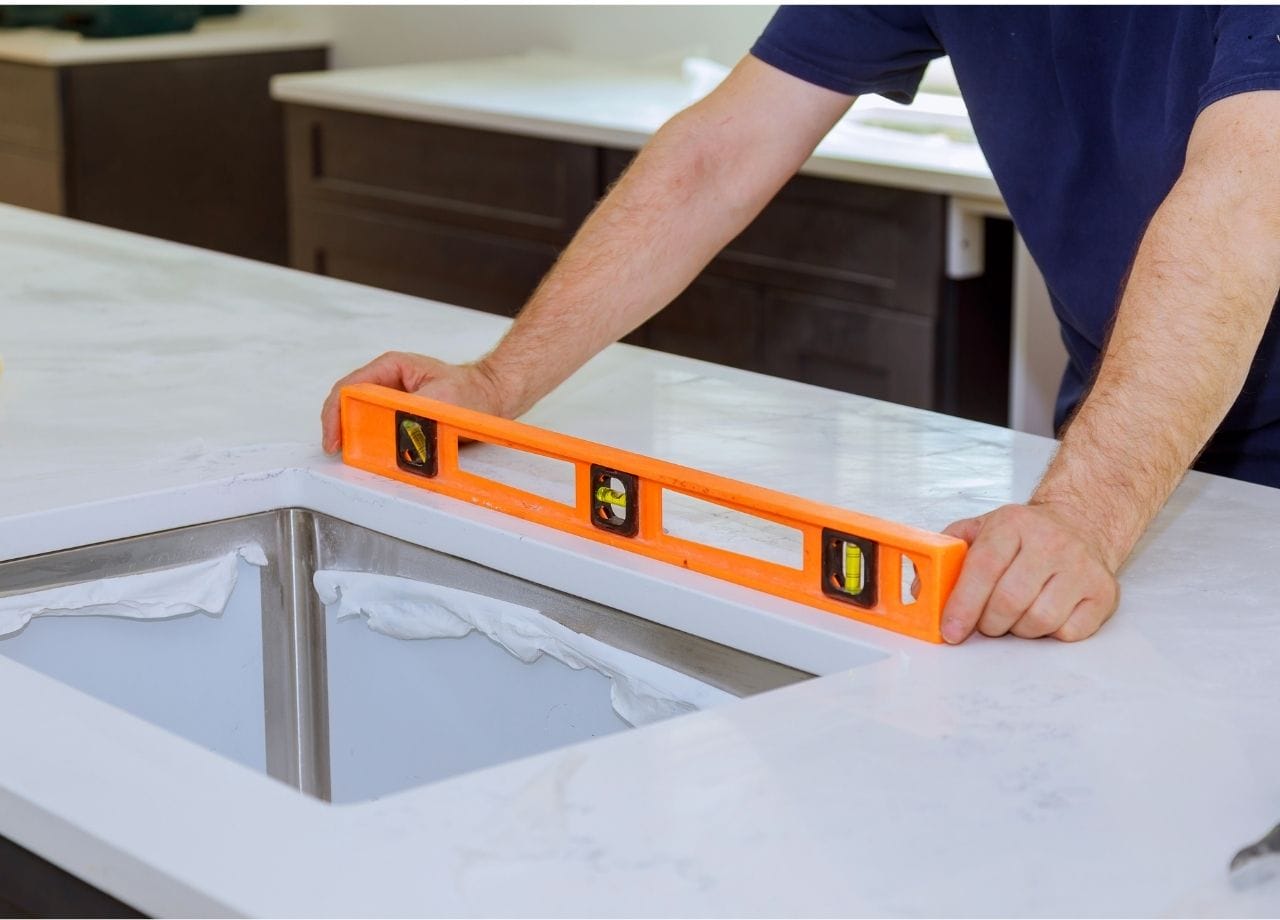Granite countertops are prized for their durability, timeless appearance, and resistance to everyday wear. But even the most resilient surfaces can lose their luster over time. Stains, chips, dull spots, and etching can all take a toll on granite, especially in high-traffic kitchens and bathrooms. Fortunately, professional granite restoration can return these surfaces to like-new condition without the cost of full replacement.
At First Coast Contracting, we help homeowners in Jacksonville, St. Augustine, and nearby areas restore damaged or aging granite surfaces through careful, expert-level restoration—an approach that maintains the integrity of the stone while renewing its appearance.
Table of Contents
Why Granite Needs Restoration
Granite is an igneous rock formed under intense heat and pressure, making it incredibly dense and hard. This natural toughness is one of the reasons it’s used in kitchens, bathrooms, and outdoor applications. However, granite isn’t invincible. Over time, several issues can develop:
- Etching and dullness from acidic spills or abrasive cleaning products
- Staining from oils, wine, coffee, and other household substances
- Chipping or cracking at edges or corners
- Hazy buildup from improper sealing or product residue
Many homeowners assume these are permanent flaws, but in most cases, granite can be professionally restored without removing or replacing the slab.
Understanding the Restoration Process
Granite restoration isn’t a one-size-fits-all service. The process is customized based on the condition of the stone and the issues being addressed. A thorough inspection is the first step, followed by a tailored approach that may include several of the following techniques:
Cleaning and Product Removal
Heavy-duty stone cleaners are used to remove surface grime, oils, waxes, and any coatings that may be clouding the granite. This step is essential before any polishing or sealing work.
Grinding and Honing
If the surface has etched or developed scratches, honing pads or diamond abrasives are used to gently grind away the damaged top layer. This process also evens out the surface, removing inconsistencies and restoring uniformity.
Polishing
After honing, polishing compounds are applied to bring back the shine. The level of polish can be customized based on whether the homeowner wants a glossy, semi-gloss, or matte finish.
Sealing
Granite is naturally porous. A high-quality penetrating sealer is applied to protect the newly restored surface from moisture, stains, and future wear. The right sealer doesn’t just sit on top; it absorbs into the stone, providing long-lasting protection without altering the appearance.
Repairing Chips and Cracks
Epoxy fillers, color-matched to the stone, can be used to repair chips and small cracks. Once cured and polished, these repairs are nearly invisible and restore the structural integrity of the surface.

Common Mistakes Homeowners Make
Restoration work is often needed sooner because of common mistakes that damage granite prematurely. Knowing what to avoid can help extend the time between professional restorations.
Using acidic or abrasive cleaners is a major cause of surface dullness and etching. Skipping routine sealing allows stains to penetrate and set into the stone. Placing hot pans directly on the surface can cause thermal shock and cracking. Ignoring small chips or cracks until they worsen can turn a minor repair into a major issue. Allowing spills to sit for extended periods increases the risk of permanent staining.
Many homeowners think granite is maintenance-free. It’s low maintenance, but not no-maintenance. Proper care is essential to preserving the finish and performance of your countertops.
Signs Your Granite Countertops Need Restoration
It’s not always obvious when a granite surface is due for restoration. Some warning signs include:
- Loss of shine, especially in high-use areas
- Dark spots or watermarks that won’t wipe away
- Chips along edges or corners
- Surface feels rough or inconsistent
- Dull, hazy appearance despite cleaning
These issues not only affect the look of your kitchen or bathroom but can also allow moisture to penetrate the stone, leading to further damage.
DIY vs. Professional Restoration
There are products marketed as DIY granite restorers, but they offer limited results and can sometimes cause more harm than good. These typically include waxes or surface-level polishes that temporarily mask dullness but don’t address underlying damage.
Professional restoration uses commercial-grade tools and materials, combined with trained expertise. This allows for deep cleaning, precise grinding, and long-lasting sealing—results that can’t be matched with over-the-counter kits.
Attempting to polish or hone granite without the right tools can create uneven surfaces or worsen scratches. For best results, especially with natural stone, restoration should always be done by specialists.
Maintaining Restored Granite
Once your granite has been restored, proper care will help preserve the results.
Clean regularly with pH-neutral stone cleaners that won’t harm the sealant or polish. Wipe up spills quickly, especially those from acidic foods like citrus, vinegar, or wine. Use cutting boards and trivets to avoid direct contact with knives or hot pans.

Reseal the surface annually or as recommended by your restoration technician. Avoid harsh scrubbing pads or steel wool, which can dull the surface or remove sealant. With proper upkeep, a professionally restored granite surface can stay looking new for many years.
When Restoration Isn’t Enough
In rare cases, a granite countertop may be beyond restoration—such as when large cracks compromise the structure, or the slab was poorly installed. If your granite is showing signs of major failure or wasn’t sealed correctly from the start, replacement might be the better option. But these situations are the exception.
In most cases, even heavily worn granite can be brought back to life through restoration. It’s cost-effective, environmentally responsible, and avoids the disruption of tearing out and replacing countertops.
The Bottom Line
Granite countertop restoration is an excellent way to protect your investment, improve the appearance of your home, and avoid the expense of replacement. When done professionally, the process revitalizes your stone surfaces, strengthens them against future damage, and extends their lifespan.
If you’re noticing stains, dull areas, or chipped edges on your granite, it may be time to consider restoration. With the right care and expertise, your countertops can look and perform like new for many years to come.




